Gunn Diode: The Semiconductor Marvel Behind High-Frequency Technology
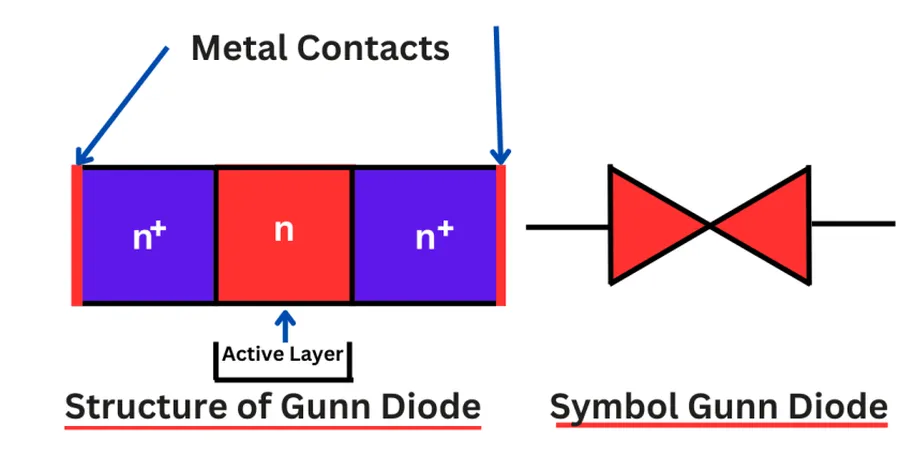
In our technologically advanced world, electronic components are the unsung heroes enabling everything from smartphone communication to complex radar systems. Among these, the Gunn diode stands out for its peculiar ability to generate high-frequency microwaves using the 'Gunn effect'. This device, though deceptively simple in structure, plays a crucial role in many modern technologies. This article delves into the working principles, applications, and intricacies of the Gunn diode, revealing its significance in our daily lives and the science that powers it.
Understanding the Gunn Diode Structure and Materials

The Gunn diode, unlike conventional PN junction diodes, is a unique semiconductor device characterized by its single n-type doped material construction, typically utilizing materials such as Gallium Arsenide (GaAs) or Indium Phosphide (InP). Its operation hinges on the bulk properties of these materials rather than the junction properties found in standard diodes. The layered structure of the Gunn diode, comprising an active region and doped contact regions, is crucial to its functionality, enabling it to generate microwave frequency oscillations.
- Active Region
This is the core of the Gunn diode where the Gunn effect takes place. It’s typically a region of lightly doped n-type semiconductor material, with its thickness being a critical parameter for determining the oscillation frequency of the device. - Doped Contact Regions
These are heavily doped n-type regions at either end of the active region, providing low-resistance contacts for the application of external voltage. They facilitate the injection of charge carriers into the active region, allowing for device functionality.
The choice of semiconductor material, whether GaAs or InP, significantly impacts the diode's performance characteristics. GaAs, with its higher electron mobility, is commonly used for higher frequency operation, while InP, with its higher peak electron drift velocity, can provide higher power handling capabilities, although other factors such as doping concentration also have a substantial effect.
The Gunn Effect: Mechanism Behind Microwave Generation
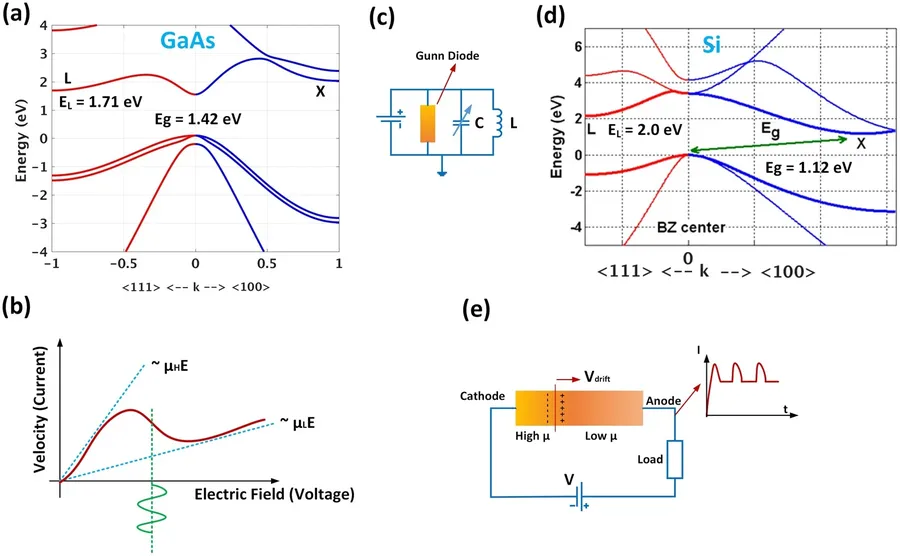
The Gunn effect, the cornerstone of Gunn diode operation, describes the phenomenon where electrons in certain semiconductor materials, such as gallium arsenide (GaAs) or indium phosphide (InP), transfer to higher energy valleys under the influence of a strong electric field. This transfer is key to generating microwave frequencies and is a fundamental aspect of the negative differential resistance exhibited by Gunn diodes.
This phenomenon occurs due to the unique band structure of these materials. When a sufficient electric field is applied, electrons gain enough energy to jump from a lower-energy, high-mobility valley to a higher-energy, low-mobility valley. This transfer results in a decrease in the average electron velocity, creating the negative differential resistance necessary for microwave oscillation. The process involves several key steps:
- Electron Acceleration:
Initially, as the electric field increases, electrons in the lower energy valley accelerate within the semiconductor crystal. - Intervalley Transfer:
Upon reaching a critical threshold of the electric field strength, electrons gain sufficient energy to transfer to a higher energy valley. These valleys have a lower electron mobility. - Velocity Decrease:
Due to the lower mobility of the electrons in the higher energy valley, the average electron velocity decreases with an increase in the electric field. This creates a region of negative differential resistance. - Domain Formation
The negative differential resistance results in formation of high-field regions called space-charge domains. These domains propagate through the diode's active region.
How Gunn Diodes Generate Microwaves
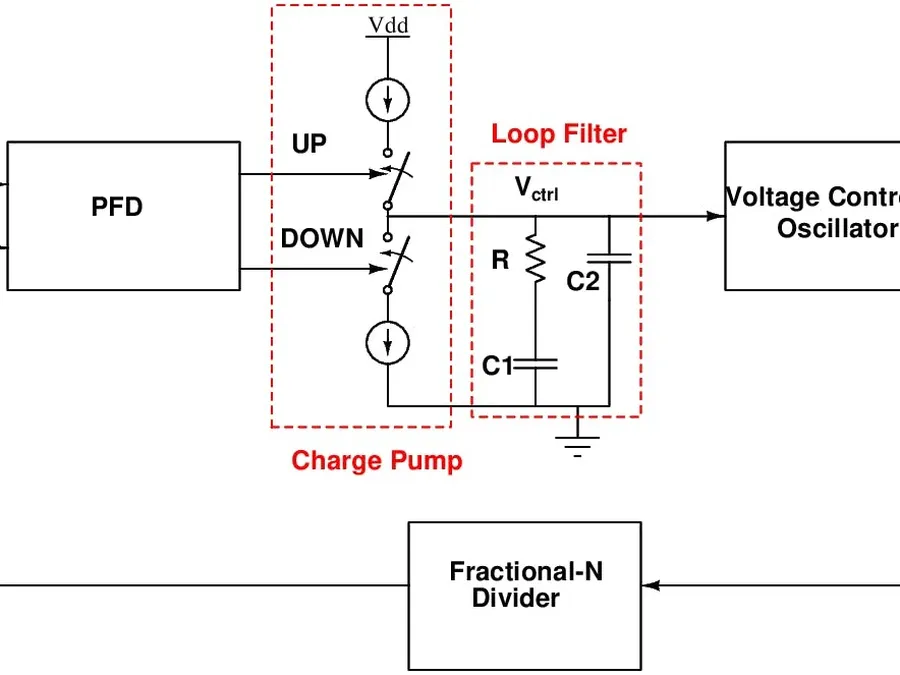
Gunn diodes generate microwaves through a unique process involving the formation and drift of space charge domains within their active region. This process is a direct consequence of the Gunn effect and the diode's inherent negative differential resistance.
The microwave generation process can be broken down into the following steps:
- Electron Injection
When a sufficient electric field is applied across the Gunn diode, electrons are injected into the active region, which is typically a lightly doped n-type semiconductor. - Space Charge Domain Formation
Due to the material properties of the semiconductor (e.g., Gallium Arsenide), the electrons experience a shift in their energy state, causing them to accumulate in a localized region called a 'space charge domain'. This domain has an excess of negative charge. - Domain Drift
This domain, under the influence of the applied electric field, begins to drift towards the anode. The speed at which the domain drifts is proportional to the applied electric field. - Current Oscillation
As the domain reaches the anode and disappears, the current in the external circuit drops significantly. Another domain then forms near the cathode and the process repeats creating oscillations in the current. These current oscillations are at microwave frequencies, making the Gunn diode a source of microwave energy. - Microwave Radiation
These oscillations can be harnessed by placing the Gunn diode in a resonant cavity or waveguide structure, leading to the emission of microwave radiation.
The frequency of the generated microwaves is primarily determined by the drift velocity of the space charge domain and the length of the active region of the Gunn diode. Precise control over these parameters allows for the generation of microwaves at specific frequencies.
Gunn Diode's Unique Property: Negative Differential Resistance
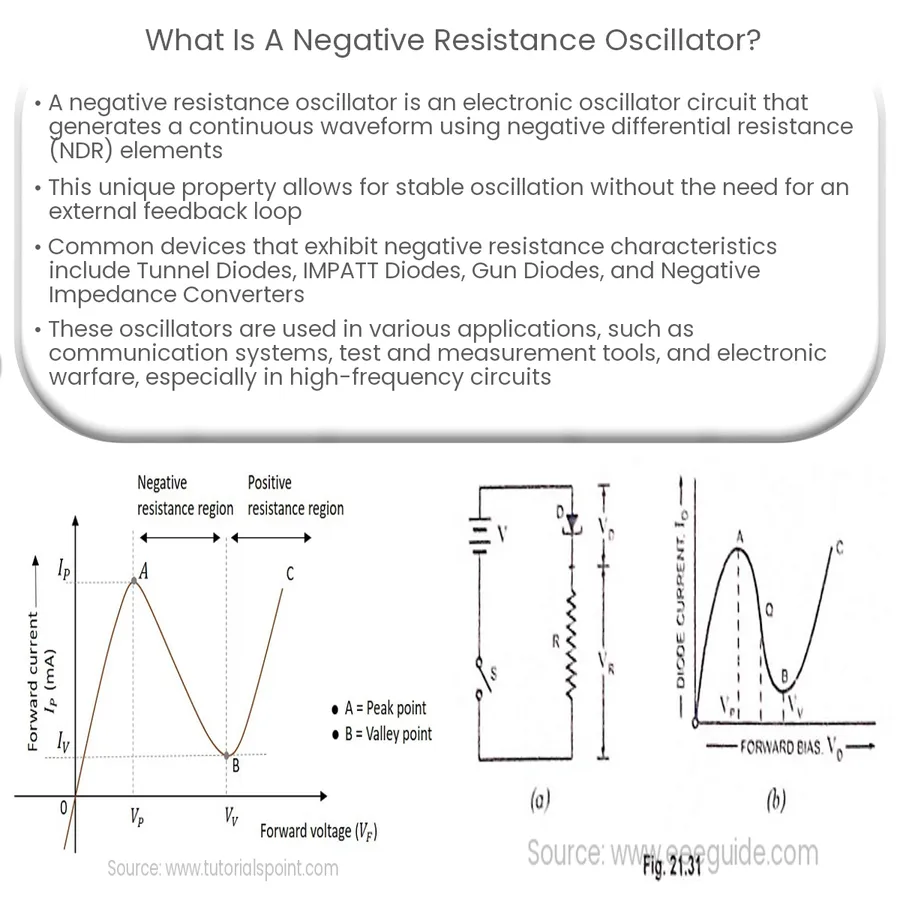
The cornerstone of Gunn diode operation is its unique characteristic of negative differential resistance (NDR). This phenomenon, where an increase in applied voltage leads to a decrease in current, is crucial for the diode's ability to generate microwave oscillations. It's a departure from the typical behavior of most electronic components and forms the basis of its functionality in high-frequency applications.
In conventional conductors and semiconductors, an increase in voltage results in a proportional increase in current, following Ohm's Law. However, within a specific voltage range, a Gunn diode exhibits the opposite behavior; current decreases with increasing voltage. This counterintuitive behavior is not an inherent property of the material itself but arises from the unique energy band structure and electron transfer mechanisms within the diode's active region, primarily when employing materials such as Gallium Arsenide (GaAs) or Indium Phosphide (InP).
The negative differential resistance (NDR) region on the Gunn diode's I-V curve is what makes it act as an oscillator. When a Gunn diode is biased into the NDR region, any small fluctuation in the applied voltage will cause a fluctuation in current. This fluctuating current causes the formation of a high field domain, which then drifts across the diode, creating oscillations.
Gunn Diode Applications: From Radar to High-Speed Communications

Gunn diodes, leveraging their capability to generate microwave frequencies, are indispensable components in a variety of applications, spanning from radar technology to advanced communication systems. Their ability to produce high-frequency signals with relative simplicity and reliability makes them ideal for systems needing a compact and efficient microwave source.
- Radar Systems
Gunn diodes serve as compact and efficient microwave sources for radar systems used in weather monitoring, air traffic control, and automotive applications. Their high-frequency generation capability allows for precise distance and velocity measurements. - Microwave Communications
In microwave communication systems, Gunn diodes function as local oscillators, generating the carrier frequencies required for signal transmission and reception. They are utilized in both terrestrial and satellite communications. - Intrusion Alarms and Motion Detectors
Gunn diodes are used in the microwave motion detectors found in security systems and automatic door openers. They operate on the principle of Doppler radar, detecting movement by changes in the reflected microwave frequencies. - Test and Measurement Equipment
Gunn diodes are employed in signal generators and spectrum analyzers as stable sources of microwave signals, essential for testing and characterizing electronic components and communication systems at microwave frequencies. - Automotive Applications
Beyond radar in cars, Gunn diodes contribute to adaptive cruise control and collision avoidance systems, providing precise range and speed measurements of objects. - Industrial Sensing
Gunn diodes are utilized in industrial sensors for applications such as liquid level sensing, material thickness measurement, and process control. Their high frequency allows for accurate non-contact measurements.
Advantages and Disadvantages of Gunn Diodes
Gunn diodes, while offering unique capabilities in high-frequency electronics, come with their own set of advantages and disadvantages. Understanding these trade-offs is crucial for engineers selecting the appropriate components for their microwave and millimeter-wave applications. This section provides a balanced perspective, enabling informed decision-making regarding the suitability of Gunn diodes.
| Advantages | Disadvantages |
|---|---|
| High-frequency operation: Capable of generating microwave and millimeter-wave frequencies. | Limited power output: Generally lower power levels compared to other microwave devices like magnetrons or klystrons. |
| Simplicity: Relatively simple in structure, consisting of a single semiconductor material. | Temperature sensitivity: Performance can be significantly affected by changes in operating temperature. |
| Reliability: Generally reliable and robust under normal operating conditions. | Lower Efficiency: Gunn diode have a relatively low efficiency in converting input power into microwave output, leading to more heat generation. |
| Cost-effective: Can be more economical for certain applications compared to more complex devices. | Harmonic Generation: Gunn diodes generate harmonics which might lead to unwanted interference and require filtering circuitry. |
| Small Size: Compact in size, suitable for space constrained applications. | Bias Sensitivity: The output frequency of a Gunn diode is very sensitive to the applied bias voltage and require stable and precise power supplies. |
Gunn Diode vs. Other Microwave Diodes: A Comparison
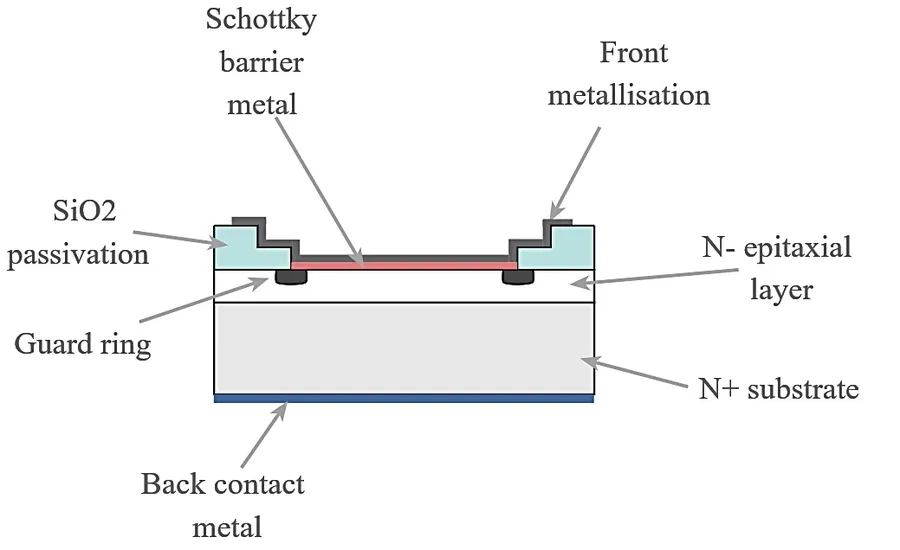
Gunn diodes and other microwave diodes, such as IMPATT (Impact Ionization Avalanche Transit-Time) diodes, serve distinct roles in high-frequency electronics. While both are capable of generating microwave frequencies, their underlying physics, operational characteristics, and suitable applications differ considerably. This section provides a comparative analysis to delineate these differences and guide appropriate selection.
| Feature | Gunn Diode | IMPATT Diode |
|---|---|---|
| Operating Principle | Based on the Gunn effect, utilizing negative differential resistance due to electron transfer to higher energy valleys within a single semiconductor material. | Relies on impact ionization and avalanche multiplication, requiring a high reverse bias to initiate this process and generate oscillations. |
| Material Composition | Typically fabricated from n-doped semiconductors such as GaAs or InP, possessing a relatively simple single-layer structure. | Generally composed of p-n junctions with a drift region, exhibiting a more complex multilayer structure (p+-n-n+ or p-i-n). |
| Frequency Range | Suitable for lower microwave frequencies, usually below 100 GHz, with some capability at higher frequencies with advanced material engineering. | Operates at higher microwave frequencies, capable of reaching several hundred GHz. |
| Power Output | Generally provides lower power output compared to IMPATT diodes, often in the range of milliwatts to a few watts. | Generally provides higher power output in the range of watts to tens of watts, at higher microwave frequencies. |
| Noise Performance | Characterized by lower noise levels than IMPATT diodes, offering a cleaner signal for applications requiring higher signal fidelity. | Prone to higher noise levels compared to Gunn diodes due to the inherent nature of the avalanche process. |
| Bias Requirement | Operates with a forward bias in a continuous mode, with a relatively simple biasing circuit. | Requires a high reverse bias to operate in a pulsed or continuous mode, needing a more complex biasing circuit. |
| Applications | Common in low-power microwave oscillators, radar speed guns, and local oscillators in communication systems, where stability and noise are crucial. | Widely employed in high-power radar systems, high-capacity microwave links, and high-power applications where higher output power is needed. |
| Complexity and Cost | Fabrication process is comparatively simpler, translating into lower manufacturing costs. | More complex fabrication process results in higher manufacturing costs. |
Frequently Asked Questions About Gunn Diodes
This section addresses common inquiries about Gunn diodes, providing concise and authoritative answers to enhance understanding of their operation, characteristics, and applications. We delve into the core questions, ensuring a clear and comprehensive explanation of this vital microwave technology.
- How does a Gunn diode generate microwaves?
Gunn diodes generate microwaves through the 'Gunn effect,' which arises when a sufficiently high electric field is applied across the diode's active region. This causes electrons to transfer from a high-mobility, low-energy valley to a low-mobility, high-energy valley within the semiconductor material’s conduction band. This transfer creates a region of negative differential resistance, leading to oscillations at microwave frequencies as charge accumulation regions (domains) drift through the device. - What is the fundamental principle of the Gunn effect?
The Gunn effect is a quantum mechanical phenomenon that involves the transfer of electrons between different energy bands (valleys) within a semiconductor material when subjected to a strong electric field. Specifically, electrons transition from a high-mobility, low-energy valley to a low-mobility, high-energy valley. This transition leads to a decrease in electron velocity with increasing electric field over a certain field range. This results in a negative differential resistance, which is key to microwave generation. - What is the difference between a conventional diode and a Gunn diode?
A conventional diode is a two-terminal device with a p-n junction that exhibits rectification properties, meaning it allows current to flow easily in one direction but blocks it in the opposite. A Gunn diode, also a two-terminal device, does not have a p-n junction, instead it operates on the principle of the Gunn effect. It exhibits negative differential resistance, which allows it to generate microwave frequencies, as opposed to rectifying or switching. - What are the main advantages of using Gunn diodes?
Gunn diodes offer several advantages, including their ability to generate high-frequency microwaves with relatively simple construction, compact size, and low manufacturing cost. They also exhibit high reliability and are suitable for various microwave applications, such as radar and communication systems. - What are the limitations or disadvantages of Gunn diodes?
Despite their benefits, Gunn diodes have certain limitations, such as relatively low power output compared to other microwave devices like magnetrons or klystrons. They are also sensitive to temperature changes, which can affect their performance, and have low DC to RF conversion efficiency. Moreover, they are limited by operating frequencies, though still suitable for many microwave and mm wave applications. - What are typical applications of Gunn diodes?
Gunn diodes are extensively used in applications requiring high-frequency signal generation, notably in radar systems (speed detectors, motion sensors), microwave communication systems (transmitters, receivers), and industrial sensors (intrusion alarms, level monitors). They're favored where cost, size and reliability are a concern, and particularly where simpler microwave solutions are required. Their ability to generate microwaves in compact form makes them essential components in many types of electronic systems. - How is the frequency of a Gunn diode oscillator determined?
The oscillation frequency of a Gunn diode oscillator is not solely determined by the intrinsic properties of the diode. Rather, it depends primarily on the characteristics of the resonant circuit or cavity in which it is placed. The diode itself provides the negative differential resistance and energy to sustain the oscillations, while the resonant circuit (which can be a cavity, a microstrip resonator, or other structures), determines the center frequency of the oscillation. By changing the dimensions or loading of the resonant circuit, you can adjust and optimize the frequency for a specific application.
Future Trends and Research in Gunn Diode Technology
Current research in Gunn diode technology is actively focused on overcoming existing limitations and expanding the application scope of these devices. The primary areas of investigation include enhancing power output, achieving higher operating frequencies, and improving thermal management to ensure long-term reliability and performance. These efforts are crucial for enabling Gunn diodes to meet the demands of advanced microwave and millimeter-wave systems.
Several key research directions are currently being explored:
- Advanced Materials:
Research is underway to identify and utilize new semiconductor materials beyond traditional GaAs and InP. These novel materials aim to provide improved electron transport properties, enabling higher frequency operation and better power handling capabilities. - Quantum Well Structures:
Quantum well structures are being investigated to tailor the electronic band structure, optimizing the Gunn effect for enhanced performance characteristics. These structures can achieve more efficient electron transfer and reduce parasitic effects. - Novel Device Architectures:
Engineers are developing new device designs, including the use of micro and nano-fabrication technologies to create smaller, more efficient Gunn diodes. These miniaturized devices also allow for higher density integration, which is critical for complex electronic systems. - Thermal Management Solutions:
Effective heat dissipation is a major challenge for Gunn diodes, especially at higher power levels. Research is focused on developing advanced thermal management techniques, including innovative packaging designs and heat sinking materials to improve device reliability. - Higher Frequency Operation:
Exploring methods to push the frequency limits of Gunn diodes is a significant research area. This includes optimizing the device structure, material choice, and fabrication process to extend their operation into the millimeter-wave and terahertz frequency range. - Integration with other semiconductor devices:
The integration of Gunn diodes with other semiconductor devices on a single chip is also being studied. This approach could enable complex functionalities and reduce system size and cost.
The Gunn diode, while not a traditional diode in construction, is a cornerstone of modern high-frequency technology. Its ability to generate microwaves through the Gunn effect makes it indispensable in numerous applications, from radar to communication systems. Despite its limitations, ongoing research continues to enhance its capabilities and broaden its applications. As technology evolves, the Gunn diode will likely remain a critical component in the world of microwave electronics, continuing to transform ideas into reality with each high-frequency oscillation it produces.
 AnyPCBA
AnyPCBA